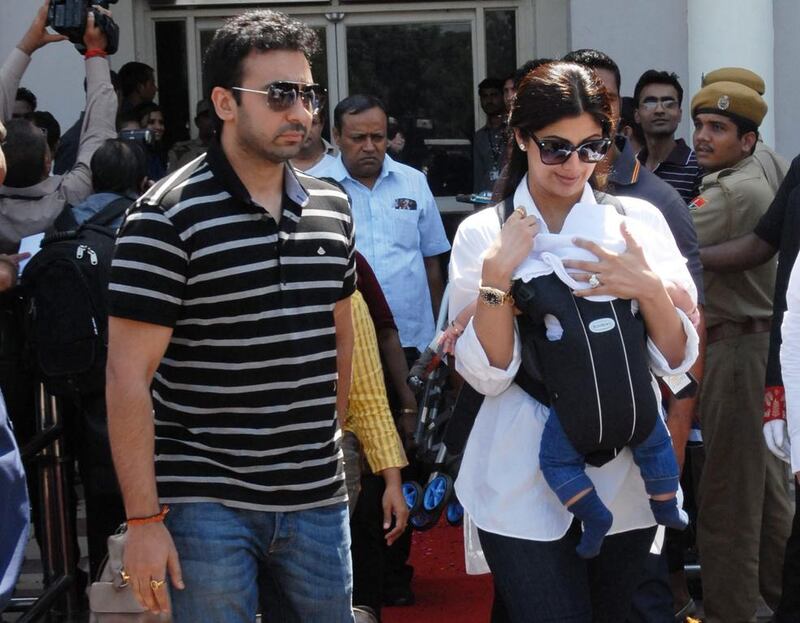There’s no denying the popularity of Bollywood movies in the UAE. Cinemas are full every weekend for the latest Bollywood blockbusters, while Bollywood movies regularly feature as the most-viewed television shows in the data supplied by the UAE audience-ratings monitor tview.
The love affair appears to be a two-way street. Increasingly, Bollywood movies are choosing the UAE as a filming location. Most recently Welcome Back, starring John Abraham, Anil Kapoor, Dimple Kapadia and Shruti Hassan, shot in Dubai, while Hrithik Roshan and Katrina Kaif are in Abu Dhabi this month to film their new action drama Bang Bang.
The two cities are also often used as glamorous alternatives to Mumbai for Bollywood premieres, in no small part due to the fact that the UAE’s Friday-Saturday weekend allows for a Thursday night premiere in Dubai that can then generate great publicity for the film’s Friday opening in India.
Among recent premieres, the most high profile was Amitabh Bachchan's Bhoothnath Returns, which opened at Dubai's Meydan IMAX on April 14 this year.
Indian celebrities don’t always head right back to India when they’ve finished filming or attending the premiere of a movie, either; many have second homes in the UAE. Shah Rukh Khan has a villa on The Palm, while Shilpa Shetty has a flat in the Burj Khalifa. A Dubai estate agent last month claimed a Bollywood star was in the market to buy the US$19 million (Dh70m)Lebanon Island in the World Islands development.
Bollywood fans in the UAE are not restricted to the expat population from the subcontinent, although the 2.2 million Indian expats in the country undoubtedly represent a sizeable market for film producers. It’s not a scientific study, but eye-witness accounts from friends who regularly attend Bollywood films suggest that at a typical weekend screening, about 25 per cent of the audience is usually made up of Arabs. It’s perhaps not that surprising – there is a high degree of both geographical and cultural proximity between the Arab world and India, and plenty of Arab cinema, particularly Egyptian, features song-and-dance numbers similar to Bollywood.
Unsurprisingly, the local television audience has a ravenous appetite for Bollywood movies, too. Again, this isn’t just among the Indian audience. In 2008, Zee Entertainment launched Zee Aflam, the first channel in the region to exclusively screen Bollywood movies and related content – all either subtitled or dubbed in Arabic. Six months ago we saw the much-vaunted launch of MBC Bollywood – the region’s biggest broadcaster’s attempt at breaking into the sizeable market of Arabic-speaking Bollywood fans with its own Arabic channel of Bollywood content.
Many observers might have expected the launch of a second Arabic Bollywood channel to simply cut into the audience of the existing one but, in fact, the figures from tview seem to suggest quite the opposite. If anything, it seems the presence of a second Bollywood channel for Arab viewers, particularly one with the brand reputation of MBC among Arab audiences, has simply increased the demand for Bollywood content.
The new channel started slowly compared with Zee at launch in October, with about 180,000 viewers compared with Zee Aflam’s 360,000. By the following month, word had clearly spread, and the MBC channel clocked up more than 430,000 viewers. It might be expected that these viewers were being taken from the rival, but in the same month, Zee Aflam cleared a massive 700,000 viewers. These numbers have continued to grow incrementally for both channels. The two are virtually neck and neck – the most recent figures (March) show both channels have about 800,000 viewers each, with MBC holding the slimmest of leads.
Intriguingly, there's also a fairly clear trend, whereby MBC is by far the most watched channel during prime time, while Zee Aflam comfortably gathers more viewers during other parts of the day – perhaps because of the huge MBC network's ability to cross-promote during prime time on its other channels. For example, during the April 22 episode of MBC Bollywood's popular serial Saraswatichandra – the Arabic title is Sehr Al Asmar – which had been promoted on MBC 1 throughout the day, 81,000 viewers migrated from MBC 1 to MBC Bollywood during the show's broadcast.
What’s clear is that the television audience for Bollywood movies dubbed in Arabic is now about double the numbers six months ago when MBC Bollywood launched, whether on the new channel or the older Zee Aflam. We can only surmise why this may be. The entry of a respected Arabic brand into the field? A sudden crop of better movies on both channels? An unexpected spike in Arab tourists going to India and returning with a new-found love of the genre? Or, indeed, any, none or all of the above – we can’t be certain.
It does seem to be a win-win situation for everyone, though. Both channels have dramatically increased their audience since October, Bollywood producers have about 300,000 new fans in the region and that, in turn, could benefit the local production industry, with 300,000 new incentives to bring filming to Dubai or Abu Dhabi. For audiences, meanwhile, they now have twice as much Arabic Bollywood content to choose from and it’s all free-to-air, too.
cnewbould@thenational.ae





